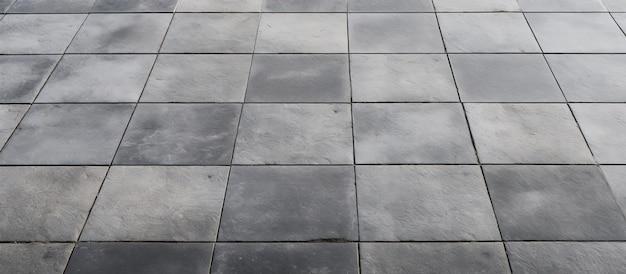Welcome to our comprehensive guide on the topic of grout lines. If you’re embarking on a tile installation project or simply curious about the world of tile and grout, understanding the depth of grout lines is essential for achieving a professional and finished look. In this blog post, we’ll address commonly asked questions such as how deep grout lines should be, whether grout lines should be level with the tile, and whether you can add more grout after it dries.
When it comes to grout lines, finding the right depth is crucial for both aesthetic and practical reasons. Too shallow and your tiles may not be adequately supported, risking potential cracking and movement. Too deep and your grout lines can become a magnet for dirt and grime, making maintenance a hassle. So, let’s dive in and explore the factors that determine the ideal depth for grout lines.
Now, let’s unravel the mysteries of grout depth and discover the tips and tricks to ensure a successful tile installation.
How Deep Should Grout Lines Be
So, you’ve embarked on a tiling adventure. You’ve meticulously chosen your tiles, painstakingly applied the adhesive, and now you stand before the final frontier: grout lines. It’s time to make some decisions, my friend. How deep should those grout lines be? Fear not, for we are here to guide you through this puzzling dilemma.
The Goldilocks Grout Goldilocks Grout
When it comes to grout lines, you don’t want them too thin nor too thick. You want them just right, like Goldilocks and her porridge. The ideal range for grout lines is usually between 1/16 to 1/8 of an inch. Why? Well, let’s dive into the pros and cons of different grout line depths, shall we?
The Skinny on Thin Grout Lines
Picture this: you’ve set your beautiful tiles and decided on grout lines so thin you need a magnifying glass to see them. While it may seem like a masterstroke in minimalism, thin grout lines have their caveats. On one hand, they create a sleek, seamless look that emphasizes your tiles. But, on the other hand, they offer less protection and can lead to cracking or chipping if your tiles shift or expand. So, if you opt for thinner grout lines, make sure your tiles are secure and stable.
The Tale of Thick Grout
Going thick with your grout lines comes with its own set of merits and quirks. Thick grout lines provide extra stability and can accommodate slight variations in tile sizes. Plus, they can offer a handsome contrast to your tiles, creating a dramatic effect. However, be warned, my friend, thick grout lines are notorious stain collectors. Whether it’s spaghetti sauce splatters or that inexplicable purple paint left behind from your last DIY project, cleaning becomes a greater challenge with wider grout lines. Consider your maintenance prowess before taking the plunge.
A Happy Medium That’s Jawsome
Are you searching for the sweet spot between thin and thick, like a shark lurking in the depths? Look no further, brave tiler, for the happy medium awaits you. Grout lines between 1/16 to 1/8 of an inch offer the best of both worlds. They provide enough protection for your tiles while still allowing for flexibility and easy cleaning. It’s the Goldilocks grout solution, not too big, not too small, but just right.
Factors That Influence Grout Line Depth
Now that you understand the ideal range of grout line depth, it’s important to mention a few factors that can sway your decision. First, tile size matters. Larger tiles can handle slightly smaller grout lines, while smaller tiles might require slightly wider ones for proper support. Second, the tile’s overall style plays a role. If you’re aiming for a rustic look, wider grout lines can enhance that aesthetic. Conversely, if you’re after a modern, clean-lined vibe, thinner grout lines are the way to go. Lastly, consider the ever-changing climate. If you live in an area with temperature or humidity fluctuations, leaving slightly larger grout lines can allow for potential expansion or contraction of the tiles.
Determining the ideal depth for your grout lines is a crucial part of any tiling endeavor. Remember, not too thin, not too thick. Keep in mind the size of your tiles, the desired style, and the climate you’re in. With these considerations, you’ll be well on your way to achieving grout line greatness. So, pull out that trowel, embrace your inner artist, and let your tiles shine with the perfect grout lines.
FAQ: How Deep Should Grout Lines Be
How Even Should Tile Be
When it comes to tile installation, achieving a level surface is top priority. Ideally, tiles should be perfectly aligned, avoiding any unevenness. However, a slight variation is acceptable, as long as it doesn’t compromise the overall integrity or aesthetics of the installation.
Can Grout Be Too Low
While it’s important to fill the gaps between tiles with grout, going too low can be problematic. Inadequate grout depth may lead to weakened support and potential damage to the tiles. It’s crucial to strike a balance and ensure sufficient grout depth while keeping it level with the tile surface.
Can You Add More Grout After It Dries
Unfortunately, once grout has dried and cured, it’s not suitable for adding more on top. It may result in an uneven color or texture, making the area look patchy. It’s best to plan ahead and ensure proper grout application during the initial installation.
Should Grout Lines Be Level with Tile
Yes, grout lines should ideally be level with the surface of the tile. This creates a seamless and polished appearance, enhancing the overall aesthetic appeal of the tiled area. However, it’s important to note that slight variations may occur due to the natural characteristics of different tiles.
What Is the Thinnest Grout Line Possible
The thinnest grout line possible depends on various factors, such as the tile size, type, and aesthetic preferences. Generally, a grout line as thin as 1/16th of an inch is considered standard. However, it’s always best to consult with a professional to determine the most appropriate grout line width for your specific project.
Is It Normal for Tile to Be Uneven
While minor variations in tile surface can be expected, significant unevenness is not normal. If your tiles display noticeable inconsistencies or create a bumpy floor or wall, it may be a sign of poor workmanship. In such cases, it’s best to consult a professional to assess and rectify the issue.
How Shallow Should Grout Be
Grout should be deep enough to provide adequate support and stability for the tiles, without compromising the desired look. Typically, a grout depth of 1/8th to 3/16th of an inch is recommended. This ensures a strong bond between the tiles and prevents potential damage or displacement.
Can You Touch Up Grout
Yes, you can touch up grout to repair minor imperfections or gaps in the existing grout lines. By carefully applying new grout to the affected areas, you can restore the appearance and functionality of the tiled surface. However, it’s essential to ensure a seamless blend with the existing grout for a flawless finish.
Can You Put Self-Leveling Compound on Ceramic Tiles
Self-leveling compound is primarily designed for use on uneven subfloors to create a level surface before tile installation. It is generally not recommended to apply self-leveling compound directly on ceramic tiles, as it may compromise their integrity. It’s best to consult with a professional to determine the most suitable approach for your particular situation.
How Can You Tell a Bad Tile Job
A bad tile job can be easily identified by certain telltale signs. Look out for uneven or wobbly tiles, visible gaps or excessive grout lines, inconsistent spacing, or mismatched patterns. Uneven edges, lippage, or improper alignment are also indicators of a subpar tile installation. If you notice any of these issues, it’s important to address them promptly to ensure a visually appealing and durable result.
How Do You Even Out Grout Lines
To even out grout lines, you can use a grout removal tool or a grout saw to carefully scrape away excess grout. Be sure to clean the area thoroughly afterward to remove any residual debris. Alternatively, you can consult a professional to assist you with regrouting or correcting uneven grout lines for a smooth and seamless finish.
Should Tile Be Perfectly Level
While achieving perfectly level tiles is the ultimate goal, it’s also important to consider the natural characteristics of the tile and the intended design aesthetic. Minor variations can be accommodated to add dimension and visual interest. However, these variations should still fall within acceptable limits and not compromise the functionality or overall appearance of the tiled surface.
Can You Use Self-Leveling Compound on Ceramic Tiles
As mentioned earlier, self-leveling compound is primarily intended for subfloors rather than directly on ceramic tiles. The compound is designed to level uneven surfaces, and applying it to tiles may result in an uneven or compromised tile installation. It’s always best to consult with a professional to determine the most appropriate method for achieving a level substrate before tile installation.
Can You Add Grout on Top of Grout
Adding grout on top of existing grout is generally not recommended, as it may not adhere properly and can result in an uneven or visually unappealing surface. If you need to repair or enhance the existing grout, it’s best to remove the old grout before applying new grout to ensure a seamless and durable finish.
How Do You Check If Tiles Are Laid Properly
To check if tiles are properly laid, visually inspect the surface for consistent spacing, uniformity in alignment, and levelness. Run your hand across the surface to check for any lippage or unevenness. Additionally, tapping gently on the tiles should produce a solid sound, indicating a secure bond with the substrate. If you have concerns about the quality of the tile installation, consider seeking professional advice to ensure a satisfactory outcome.
How Do You Ensure Level Tiles
Ensuring level tiles requires careful planning and execution. Begin by preparing a level and flat substrate before tiling. Proper use of tile spacers and constant measurement throughout the installation process can help maintain consistent tile spacing and alignment. A laser level or bubble level can also assist in verifying the horizontal and vertical alignment of the tiles. It’s important to take the time and effort to ensure level tiles for a visually appealing and durable result.
How Deep Should Grout Be
Grout depth plays a vital role in supporting and stabilizing tiles. The recommended depth for grout is typically between 1/8th and 3/16th of an inch. This depth ensures adequate bonding between tiles while providing sufficient strength and durability. However, it’s essential to consider the specific tile characteristics and consult with a professional to determine the most appropriate grout depth for your project.
Can You Add a Second Layer of Grout
It is not advisable to add a second layer of grout on top of an existing one. Doing so may result in an uneven appearance and compromised integrity of the grout lines. If you need to touch up or repair the grout, it’s best to remove the old grout and reapply a fresh layer to ensure a seamless and professional finish.
Remember, proper installation and maintenance are crucial for achieving exceptional results with grout lines. By paying attention to these important factors, you can create a visually appealing and long-lasting tiled surface that adds beauty and value to your home.

